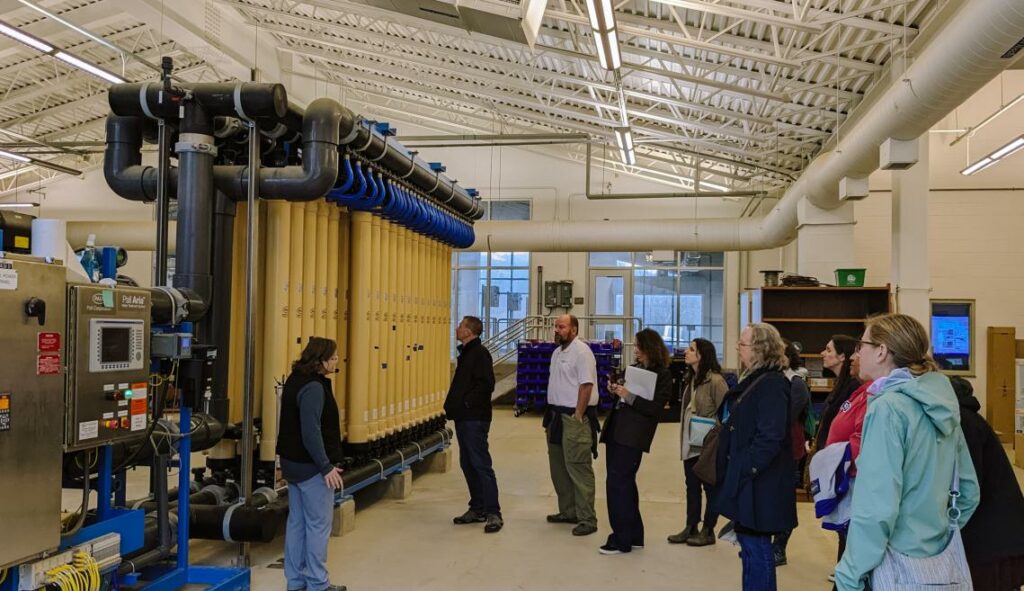First New York State Drought Summit Promotes Collaborations Across the State
The two-day event was held in mid-April and focused on: current conditions and trends, monitoring and assessment in New York State, tools and approaches, and communication around drought.
In New York State, drought is seldom a topic of discussion especially in spring when it seems to rain every other day.
The first New York Drought Summit brought together academics, educators, state, local, tribal, regional, and national management decision-makers, and community members to discuss how to build drought resilience through partnerships and citizen science. The two-day event was held in mid-April at the CAP ArtSpace Gallery in downtown Ithaca. The summit focused on: current conditions and trends, monitoring and assessment in New York State, tools and approaches, and communication around drought.
“It is important to discuss drought, even in wetter climates like we have here in New York State. When drought occurs, like it has recently in western New York, it can have significant impacts on people’s lives, the environment, and many sectors of the economy,” said organizer and climatologist for the Northeast Regional Climate Center, Dr. Natalie Umphlett.
According to the New York State Climate Impacts Assessment, “while New York is not expected to see an increase in multiyear droughts, short-term seasonal droughts can have a large impact.” Drought may not show itself as dramatically as it does in the Western United States, but short-term seasonal droughts can put stress on water systems with less storage and high demand. “Droughts often increase the demand for water, especially for irrigation, and lead to reduced crop yields for farmers.”
Participants of the summit shared resources and tools their organizations use to monitor and predict drought and its impacts with an emphasis on tools that welcome input from citizen scientists. Notably, participants learned about the citizen science projects: Condition Monitoring Observer Reports (CMOR), Flow Photo Explorer (FPE), and Community Collaborative Rain, Hail & Snow Network (CoCoRaHS). Another presenter from the New York State Department of Environmental Conservation discussed the agencies involved with the Drought Management Task Force which inform the current drought conditions for New York State.

Summit participants took a tour of the Ithaca Wastewater Treatment Plant. Image Provided
During the two-day summit, participants took a tour of the Ithaca Wastewater Treatment Plant led by Roxanna Johnston with the Cayuga Lake Watershed Intermunicipal Organization. Johnston discussed the severe drought in Tompkins County in 2016 which led to increases in the concentration of iron and manganese that caused concerns over the discoloration. Had the drought continued, Ithaca would need to put mandatory restrictions in place to eliminate unnecessary water use.
For some, the tools and resources presented were well-understood, but for many, it was the first time they were seeing them. Beyond the tools and resources, it was the first time many had met each other in-person. “For me, this summit really underscored the importance of connection,” said Dr. Umphlett. She added, “building a community around drought monitoring will help cultivate collaborative work that can ultimately help us all better prepare and respond to the next drought.”
Participants also spent time discussing the needs in New York State and envisioning approaches, based on the tools and case studies presented, to moving towards a more drought resilient future in the state.
Anyone interested in learning how they can get involved with these projects should follow the hyperlinks above and start contributing. For more information on national drought conditions, visit the NOAA-supported National Integrated Drought Information System via Drought.gov.
Funding for the New York State Drought Summit was provided by the New York State Department of Environmental Conservation Great Lakes Watershed Program and the Hudson River Estuary Program with support from the New York State Environmental Protection fund through the New York State Water Resources Institute’s competitive research and outreach request for proposals.
This article originally appeared on CALS News.

